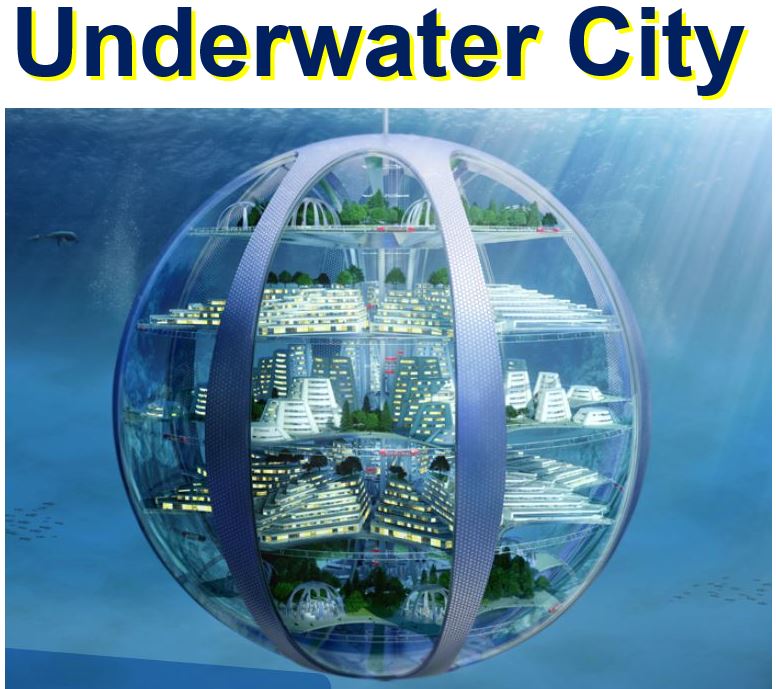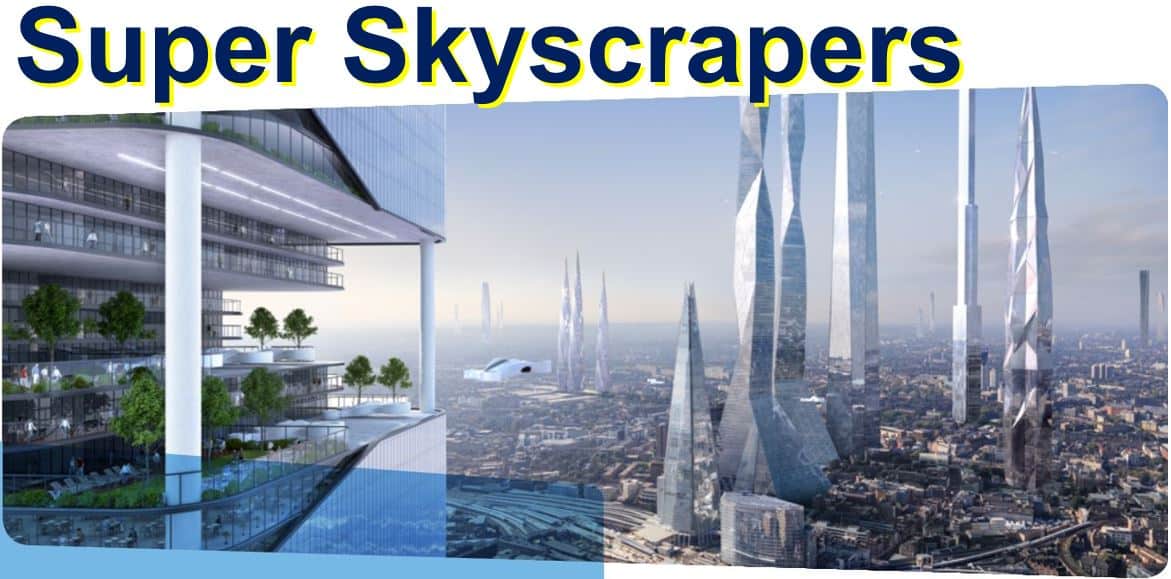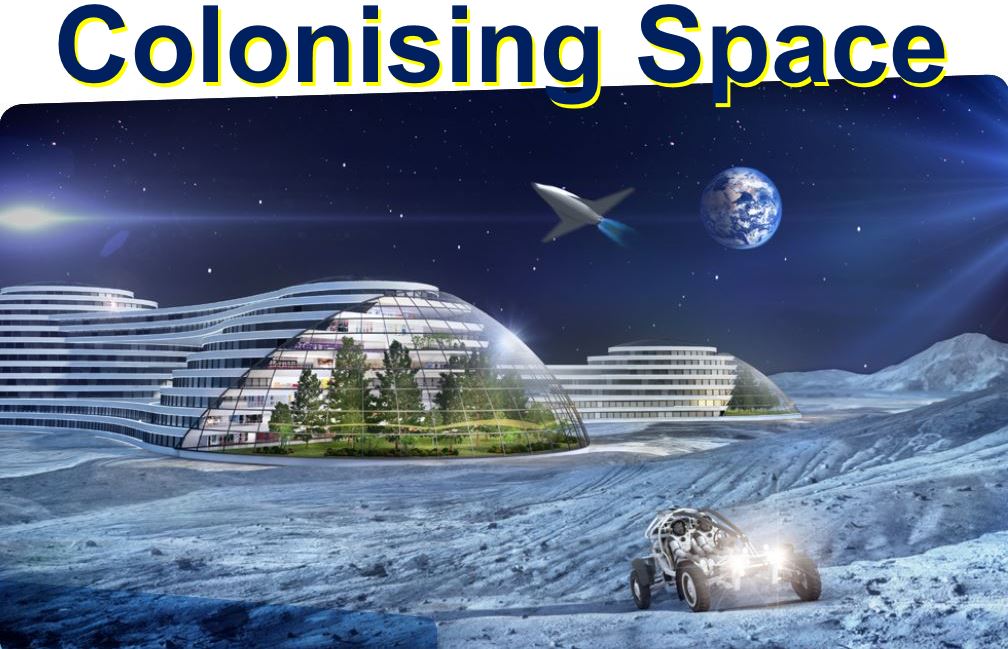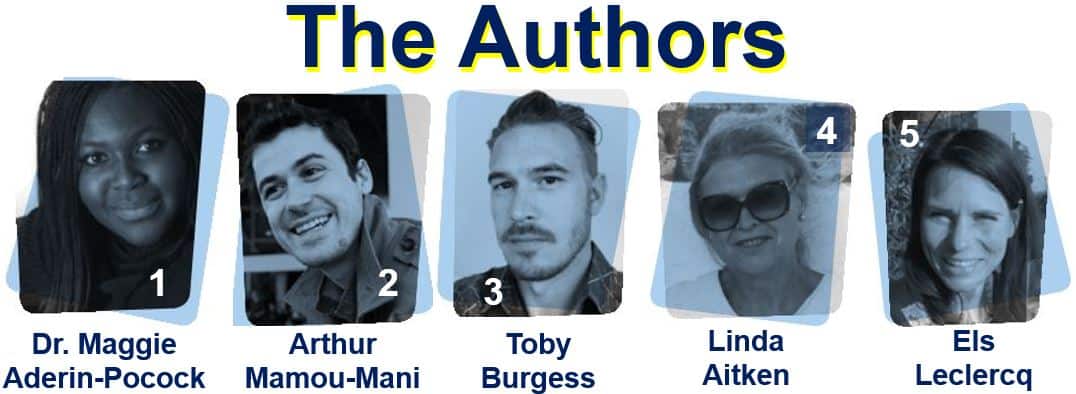Imagine a world full of underwater cities, underground skyscrapers, 3D printed food and houses, personal drones instead of cars as an individual human’s mode of transport, and regular passenger commercial flights to the Moon and maybe even Mars. These quasi-science fiction type notions may become fact by the year 2116, i.e. in one hundred years’ time.
SartThings, which belongs to South Korean multinational giant Samsung, commissioned a study – The SmartThings Future Living Report – which was created by a team of academics and futurologists (scientists and social scientists who try to predict what the future will be like).
The authors say that by 2116, our descendants will be able to live in huge underground 25-storey skyscrapers they call Earthscrapers.
 Underwater cities have everything humans need to thrive – the water itself can be used to create breathable atmospheres and generate hydrogen fuel through the process. Salient-resistant vegetation can be used as crops in the sea to feed us. (Image: samsung.com)
Underwater cities have everything humans need to thrive – the water itself can be used to create breathable atmospheres and generate hydrogen fuel through the process. Salient-resistant vegetation can be used as crops in the sea to feed us. (Image: samsung.com)
Global warming means sea levels will increase, so that humans will have less land to live on. Architects, town planners and policymakers will probably eventually decide there is nothing they can do to effectively stop the sea from rising, and will suggest building towns under the ocean.
Most of the Earth’s surface – 71% – consists of water. If that proportion is going to increase due to climate change, perhaps humans should consider living in the sea.
Personal transport will be different
By the year 2116, we’ll all be moving around in our own driverless, personal drones, which may also serve as ‘transport mules’ that carry heavy things around, including our workplaces and even our homes.
In the future, when people go on holiday they’ll be able to take their homes with them. Imagine what holiday resorts like Ibiza, Bali or Cancun will look like. Perhaps, instead of lots of hotels and villas for rent, there’ll be many ultra-sophisticated caravan-style parks where you can park your house.
Co-author, Dr. Maggie Aderin-Pocock, a space scientist who used to present the BBC monthly documentary television programme on astronomy The Sky at Night, explains that our lives today are virtually unrecognizable compared to how we used to live in 1916.
 The super skyscrapers of the future will dwarf the tallest buildings we have today, thanks to carbon nanotubes and diamond nano threads. The construction process will be completely automated. Workers and cranes will give way to mobile robotic arms and remotely controlled drones. (Image: samsung.com)
The super skyscrapers of the future will dwarf the tallest buildings we have today, thanks to carbon nanotubes and diamond nano threads. The construction process will be completely automated. Workers and cranes will give way to mobile robotic arms and remotely controlled drones. (Image: samsung.com)
For example, the Internet has changed how we learn, enjoy our leisure time, shop, book holidays, work, communicate, and control our lives.
Things are changing super-fast, Dr. Aderin-Pocock explained:
“Just 10 years ago, technology like SmartThings would have been inconceivable, yet today developments like this let us monitor, control and secure our living spaces with the touch of a smartphone.”
“Over the next century we will witness further seismic shifts in the way we live and interact with our surroundings – working on the SmartThings Future Living Report with a panel of industry experts has allowed me to explore what these could be.”
So many things will be 3D-printed
3D-printing, a technology that is currently barely scratching at the surface of what is possible, will change several aspects of the way we live, the authors say. Our clothes, furniture, shoes, and perhaps even entire homes and structures will be printed for us.
Imagine being able to tell a 3D-printer what you want your house to look like – just feed the details into its artificial intelligence, and you will have your tailor-made house.
3D printing technology involves making three-dimensional objects by adding one layer at a time.
Video – 3D Printing
“3D printing or additive manufacturing is a process of making three dimensional solid objects from a digital file. The creation of a 3D printed object is achieved using additive processes. In an additive process an object is created by laying down successive layers of material until the entire object is created.”
 Many people will be travelling with their own flying drones, some of them powerful enough to carry their entire homes around the world for holidays. (Image: samsung.com)
Many people will be travelling with their own flying drones, some of them powerful enough to carry their entire homes around the world for holidays. (Image: samsung.com)
3D-printers are also likely to be making our food. We are currently at the very early stages of doing this now – imagine what this technology will be like in 100 years’ time. It might be something like Star Trek’s replicator, but rather than re-arranging atoms it rapidly places layer-upon-layer of materials until you have your desired product.
Many jobs that are currently done by humans will probably be taken over by 3D-printers, robots and other devices with artificial intelligence programming.
Space travel
The authors believe that we will have colonies of humans on the Moon, and Mars too. 3D-printers will be sent out first, and will use local materials to build the infrastructure required for humans to inhabit.
Commercial space travel will be as common as passenger flights from London to Paris or Tokyo to Sydney are today.
 Colonising space – humans will first colonise the Moon, then Mars, and after that we’ll move out into the galaxy. Asteroid mining will rapidly become a viable commercial enterprise, and with these changes we’ll start establishing communities on the Moon. (Image: samsung.com)
Colonising space – humans will first colonise the Moon, then Mars, and after that we’ll move out into the galaxy. Asteroid mining will rapidly become a viable commercial enterprise, and with these changes we’ll start establishing communities on the Moon. (Image: samsung.com)
Airplanes and spacecraft will be much more sophisticated than what we have today, and considerably faster. We are already looking at technology today that can get a human from London to New York in a question of minutes – we’ll definitely be doing that by 2116. A plane will get you from Madrid to Miami as quickly as it takes most of us to walk the half-mile to our local corner shop.
Managing Director of SmartThings UK, James Monighan, said:
“The smartphone revolution is already ushering in the smart home revolution, which will have massively positive implications on how we live.”
“Our homes are becoming smarter and can now detect the presence of things like people, pets, smoke, humidity, lighting and moisture. And this is just the beginning.”
Dr. Aderin-Pocock made the following comment during a BBC interview:
“If you are living under water, you can actually take the water and break it down into oxygen and hydrogen – hydrogen is fuel, oxygen we use to breathe. We could farm in the oceans. So, I think it might be pretty nice, actually!”
“It would be like living in a tower block. You would have a large conurbation – lots of people – within this enclosure. Outside you’d have water, but inside you’d have urban life as normal.”
 1. Space scientist. 2. A French architect. 3. Director of Toby Burgess Design Ltd. 4. Highly-experienced urban planner. 5. Experienced urban designer and published researcher. (Images: samsung.com)
1. Space scientist. 2. A French architect. 3. Director of Toby Burgess Design Ltd. 4. Highly-experienced urban planner. 5. Experienced urban designer and published researcher. (Images: samsung.com)
How often have forecasts been wrong?
At the end of the First World War until 1935, everybody in the UK thought that their young men would never again in future be in danger because the Great War taught everyone to be civilized and peaceful. That prediction did not last very long!
In 1920, people were asked how they imagined Britain would be like in 2020. Most people thought that we’d all be flying around in our little personal airborne vehicles.
Today in 2016, nearly 100 years later, our cars still have four wheels just like they did in 1920, they all touch the ground all the time, and we still (mainly) fill up the tank with fossil fuels.
Perhaps 100 years is too close to the present. What will the world be like in 1,000, 10,000, or even one million years’ time. If we have not destroyed ourselves by then, died from some dreadful pandemic, or got destroyed by a killer-asteroid, how we live in, for example, 3116 will be completely different – we may even look different.
Video – Our world in 2116
Dr. Maggie Aderin-Pocock talks about what the world will be like in 100 years’ time.
